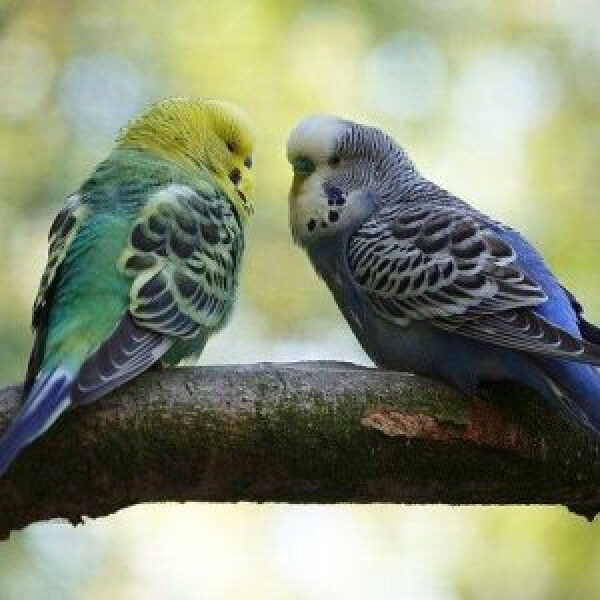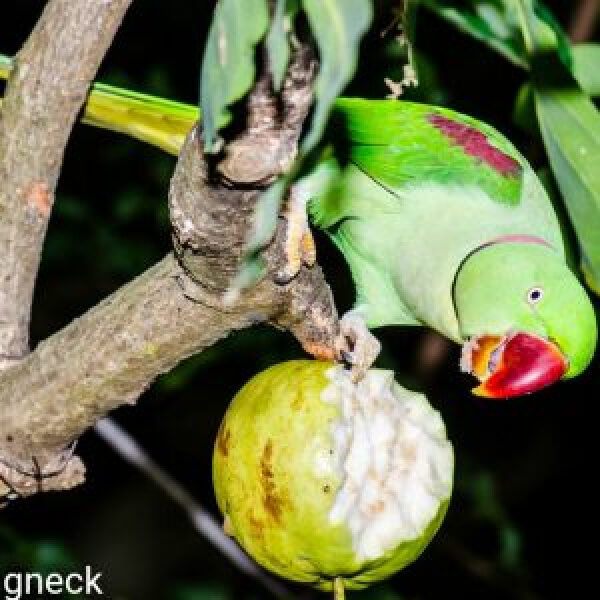
Unlocking the Mystery of How Parrot Linguists Produce Speech
Last Updated on by Catherine Tobsing
Welcome, fellow pet bird enthusiasts and curious minds, to the captivating world of parrots and their astounding ability to produce speech!
Parrots, with their vibrant feathers and mischievous personalities, have long been hailed as feathered chatterboxes. But have you ever wondered how these colorful creatures manage to mimic our words with such precision?
Prepare to be amazed as we embark on a feather-ruffling exploration into the fascinating mechanisms behind parrot speech production.
From their unique vocal anatomy to their uncanny knack for imitating sounds, we’ll unravel the secrets behind their melodious chatter.
So, grab your favorite beverage, get comfortable, and get ready to dive into the avian wonderland of parrot speech – where squawks meet syllables in the most delightful way!
Feathered factoids:
1. Polyglot parrots possess an impressive ability to mimic and produce human speech, leading researchers to delve into the fascinating mystery of their linguistic prowess.
2. The study of polyglot parrots offers valuable insights into the complex neural mechanisms involved in speech production, potentially aiding our understanding of human language development and disorders.
3. Contrary to popular belief, polyglot parrots’ speech is not merely a result of imitation but also demonstrates their comprehension of the meaning and context behind the words they utter.
Alex the African grey, who was trained by Dr. Irene Pepperberg, would ask existential questions like “What color am I?”
- What Makes Polyglot Parrots Unique?
Polyglot parrots are unique because they have the exceptional ability to imitate and reproduce a wide range of human speech sounds, making them seem like multilingual birds.
These feathered linguists are like the ultimate language hackers, effortlessly mimicking our words and leaving us humans in awe.
But how exactly do they pull off this linguistic sorcery?
While it may seem like parrots have secretly enrolled themselves in language courses when we’re not looking, the truth behind their impressive verbal skills lies in their incredibly developed vocal apparatus.
These melodious mimics possess a specialized vocal organ called the syrinx, which allows them to produce a stunning variety of sounds, including astonishingly clear imitations of our human utterances.
So, the next time you come across a parrot that can flawlessly utter phrases in multiple languages, don’t be too surprised. They may just be natural-born chatterboxes with a flair for linguistic acrobatics!
Unlike other parrots, polyglot parrots possess a higher cognitive capacity that enables them to understand the meaning and context behind the words they mimic, allowing for more effective communication with humans.
So, how do these feathered linguists manage to sound like us chatty homo sapiens? Well, it turns out it’s not just a matter of mindlessly repeating sounds.
These talking parrots are like the Shakespearean actors of the bird world, studying scripts and practicing their lines until they nail the delivery.
With an uncanny ability to grasp human speech patterns, these talented avian performers demonstrate that they are not just squawking parrots but true linguistic artists.
From mimicking accents to adopting the appropriate tone for different situations, these linguistic masterminds seem to understand the subtleties of human communication almost as well as Siri does on our smartphones.
Moreover, parrots are considered to be especially intelligent birds due to their ability to acquire and produce human-like speech.
Research has shown that they not only can learn the words but also understand the meaning behind them.
This is evidenced in polyglot parrots who stand out from their counterparts as they can spontaneously incorporate human language into appropriate situations.
How parrots display such advanced language skills still remains a mystery; nevertheless, it is clear that these amazing creatures possess impressive intelligence.
- A Closer Look at Parrot Anatomy
Parrots possess specialized vocal structures, such as a syrinx, which allows them to mimic human speech.
This unique vocal organ gives parrots the ability to control the pitch, volume, and clarity of their vocalizations.
So basically, they have the voice control skills of a seasoned opera singer, but instead of belting out dramatic arias, they opt for chirping out catchy phrases and imitating our everyday conversations.
It’s like having a little feathered comedian living in your house, cracking one-liners and mimicking your favorite TV shows.
But don’t be fooled by their witty banter and spot-on impressions; these clever parrots aren’t just mimicking sounds; they are understanding the meaning behind the words they imitate.
It’s like having a hilarious bilingual friend who can seamlessly switch from squawking to spewing out punchlines in multiple languages.
So next time you find yourself engaged in a conversation with your witty, multilingual parrot, remember that it’s their specialized vocal structures like the syrinx that allow them to create these eerily human-like sounds, creating a bond between humans and birds that’s as unique as it is captivating.
Also, the remarkable ability of parrots to produce human words stems from their innate neuroplasticity and sophisticated brain anatomy. With their highly developed forebrain and intricate neural wiring, parrots are able to replicate complex sounds such as speech patterns and phonetic sequences with incredible accuracy. Truly a fascinating feature of these amazing birds.
- The Evolution of Parrot Speech
Parrot speech is believed to have evolved as a result of their highly developed vocal learning abilities, which allow them to imitate and mimic sounds they hear in their environment.
These vibrant and feathered creatures possess a unique gift – the ability to transform themselves into the avian version of a jukebox.
With their repertoire of sounds ranging from doorbells to creaking doors and even the occasional off-key rendition of a popular tune, parrots never fail to surprise and entertain.
Don’t let them learn your phone’s ringtone otherwise, you’ll be “answering the bird” for a millenium.
It’s truly baffling how these creatures manage to mimic human words with such precision as if they hold a secret lexicon only they understand.
Perhaps hidden within their colorful plumage lies a tiny translator, ingeniously wired to decode our language in real time.
We, humans, may try to decipher their parrot-speak, but the true magic and mystery remain locked away in those enigmatic avian brains.
So next time you engage in a conversation with one of these loquacious creatures, remember, that they just might be revealing profound wisdom that goes beyond our comprehension.
Studies have shown that parrots possess a specialized vocal pathway known as the song system, which is similar to the one found in songbirds.
This system enables parrots to have fine control over their vocalizations, making it possible for them to produce human-like vocal sounds.
It’s like they’ve got access to their very own karaoke machine, but instead of belting out Sweet Child O’ Mine, they’re mimicking the sounds of our voices.
And boy, are they good at it! They can flawlessly mimic not just the words we say, but also the tone and even the accent.
I suppose it’s their way of proving that they’re more than just pretty feathers and a fancy beak—they’ve got a flair for impersonations too. So, next time you find yourself debating whether to adopt a parrot or get tickets to a comedy show, why not kill two birds with one stone – or not?
Finally, the intricate anatomy of a parrot’s vocal muscles and vocal tract enables it to imitate human speech. It demonstrates remarkable adaptability by manipulating airflow in order to replicate the unique phonetic patterns of human words.
This fascinating ability has intrigued scientists for centuries, and we can only further appreciate it by learning more about the anatomy of parrots and their incredible capacity for mimicry.
- Unraveling the Mystery Behind How Parrots Speak
Parrots possess a unique vocal learning ability that allows them to mimic and produce human words.
And let’s be honest, being a talking parrot is pretty impressive.
But what’s the secret behind their linguistic prowess? Well, it all starts with their sophisticated vocal anatomy, featuring a mighty syrinx capable of belting out a symphony of sounds.
This intricate vocal instrument gives parrots the flexibility to recreate the nuances of human speech, from the subtlest whispers to the most flamboyant exclamations. It’s like having a built-in karaoke machine that never runs out of batteries.
So, the next time your talking parrot nails that high note from your favorite song, give them a standing ovation and a treat. They truly are the divas of the bird world.
By observing and understanding the cognitive processes involved in parrot speech production, researchers have discovered that parrots have a remarkable capacity for auditory learning and vocal imitation.
They are able to associate specific sounds with meanings and replicate them with incredible accuracy. It’s as if they’ve mastered the art of impersonation, like the feathered equivalent of Hollywood’s finest impressionists.
These avian actors have a knack for picking up on the subtle nuances of human language, effortlessly mimicking our words and phrases with uncanny precision.
Whether it’s the way we say hello or the charming way we cuss when we stub our toe, parrots have an ear for it all. It’s like having a tiny, colorful linguistic chameleon perched on your shoulder, ready to unleash a flurry of human language at a moment’s notice.
While the exact mechanism behind this astonishing talent is still being studied, one thing is for sure: parrots have proved that they’re not just pretty faces – they’re linguistic aficionados too.
Besides further research revealing the neural pathways as the key to parrot speech production, these pathways enable parrots to engage in vocal learning, imitate human speech, and learn new vocalizations through social interactions.
This remarkable ability has been a source of fascination and admiration for many who are captivated by this unique creature’s inherited gift of mimicking our language.
- Investigating Cognitive and Social Factors That Influence Parrot Speakers
Parrots have a highly developed brain structure that allows them to mimic and produce human words.
This cognitive ability is due to their advanced vocal learning capabilities, which are similar to those of humans.
Picture this: a vibrant, double-yellow-headed Amazon parrot perched on a tree branch like a master of disguise, effortlessly transforming its voice into a chillingly accurate imitation of your own.
That’s right, ladies and gentlemen, we’re talking parrot! These magnificent creatures possess an astonishing talent for imitating sounds and speech patterns with unparalleled precision.
It’s as if they attended an elite, avian School of Impersonation, equipped with their own little Mockingbird 101 textbooks.
While we humans may take years to perfect our pronunciation, parrots seem to attain fluency with the simplicity of cracking open a nut. So next time you find yourself engaged in conversation with a talking parrot, don’t be fooled by these feathery charmers! They’ve got more linguistic skills up their wings than you can fathom.
Social factors also play a crucial role in parrots’ ability to produce human words. You see, parrots are not just talented imitators; they are also exceptionally social creatures. Just like humans, parrots thrive on interaction and learn from their flock members.
Through a process called vocal tutoring, these feathery linguists observe and mimic the vocalizations of their parents and fellow parrot pals. It’s like they’re attending a fancy language school, soaked in the art of parrot speech.
This exposure to their flock’s diverse repertoire and even human language models paves the way for these chatty birds to imitate and produce impeccable human words.
So, it turns out that the secret to a parrot’s linguistic prowess lies not only in their ability to imitate but also in their knack for socializing like the suave communicators they are.
Again, it is apparent that parrot speech is not simply imitating humans, but instead is learned through attentive vocal training.
The more consistent and frequent the sessions are, the greater the success parrots will have in producing human words.
It is clear for anyone wanting their feathered friend to become better at speaking that regular interaction with humans and exposure to new words with positive reinforcement during training will go a long way in improving their language skills.
- Exploring the Future of Avian Linguistics
The remarkable ability of parrots to mimic human speech is largely attributed to their advanced vocal learning capabilities, which sets them apart from other avian species.
These colorful feathered creatures have the uncanny talent of not just imitating human words, but also replicating the tone and inflection with astonishing accuracy.
It’s like having a miniature stand-up comedian perched on your shoulder, spewing witty remarks and infectious laughter.
This unique talent has earned them the title of talking parrots, making humans wonder how they achieve such linguistic feats.
While their skull structure, vocal muscles, and syrinx contribute to their exceptional abilities, it is their extraordinary capacity to learn and imitate sounds that truly amazes us.
So next time you encounter a talking parrot, prepare to be entertained and perhaps a little bit jealous of their linguistic prowess.
Parrots’ ability to produce human words involves a complex interplay of physiological adaptations, such as a highly flexible vocal tract and specialized vocal muscles, which enable them to replicate the sounds of human speech. It’s like they have their own secret language academy going on inside their tiny feathery heads.
These master impersonators have managed to crack the code of parrot speech and turn themselves into avian ventriloquists, much to the delight and astonishment of us mere humans.
While their vocal abilities may leave us scratching our heads in disbelief, it’s important to remember that these vibrant creatures have been honing their linguistic skills for centuries, captivating audiences with their repertoire of words and phrases that range from mundane chit-chat to scandalous gossip.
So the next time you hear a parrot utter something clever, just remember that behind that colorful beak is a linguistic maestro who knows how to steal the show with a few well-timed words.
Besides the biological and anatomical components that enable parrots to form human words, social interactions play a tremendous role in influencing their vocal learning skills.
Studies have indicated the importance of environmental factors in helping shape parrots’ linguistic abilities, suggesting that the birds are constantly fine-tuning their speech capabilities based on their environment, making them quite similar to humans in many ways.
Written and Approved by the Windy City Parrot Content team
Author Profile
Latest entries
 The Traveling BirdJune 26, 2025Can You Name 5 Parrot Species That Are Living Wild in the USA?
The Traveling BirdJune 26, 2025Can You Name 5 Parrot Species That Are Living Wild in the USA? Bird BehaviorJune 26, 2025How is it Parrots Are Problem Solvers Social Animals and Even Use Tools?
Bird BehaviorJune 26, 2025How is it Parrots Are Problem Solvers Social Animals and Even Use Tools? Bird & Parrot AnatomyJune 25, 2025How a Tiny Chemical Modification Makes Parrots Nature’s Living Paintings
Bird & Parrot AnatomyJune 25, 2025How a Tiny Chemical Modification Makes Parrots Nature’s Living Paintings PigeonsJune 20, 2025How Do Parrots Thrive in Cities Outside Their Native Habitats?
PigeonsJune 20, 2025How Do Parrots Thrive in Cities Outside Their Native Habitats?


